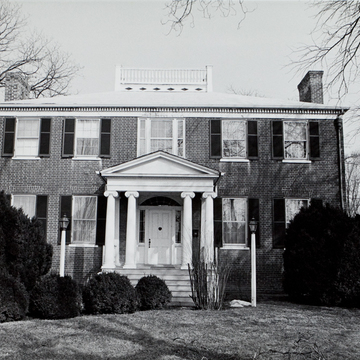Thomas Maslin is said to have brought two builders from Baltimore to supervise construction of his extraordinarily handsome Greek Revival town house. Of a size and scale more frequently found on the prosperous farms surrounding Moorefield than in town, the Maslin House has a number of features typical of antebellum architecture in the South Branch Valley. A portico of perfect classical
Judge Thomas Maslin played a singular role in the 1872 West Virginia Constitutional Convention, as recorded in this resolution: “Whereas, Hon. Thomas Maslin, a member of this body, has presented to the Convention a pen made from a quill which, with his own hand, he plucked from the pinion of the American eagle, with which he desires the new Constitution shall be signed; Resolved, That the Convention thankfully accept the pen … and direct that the new Constitution be signed therewith.”

